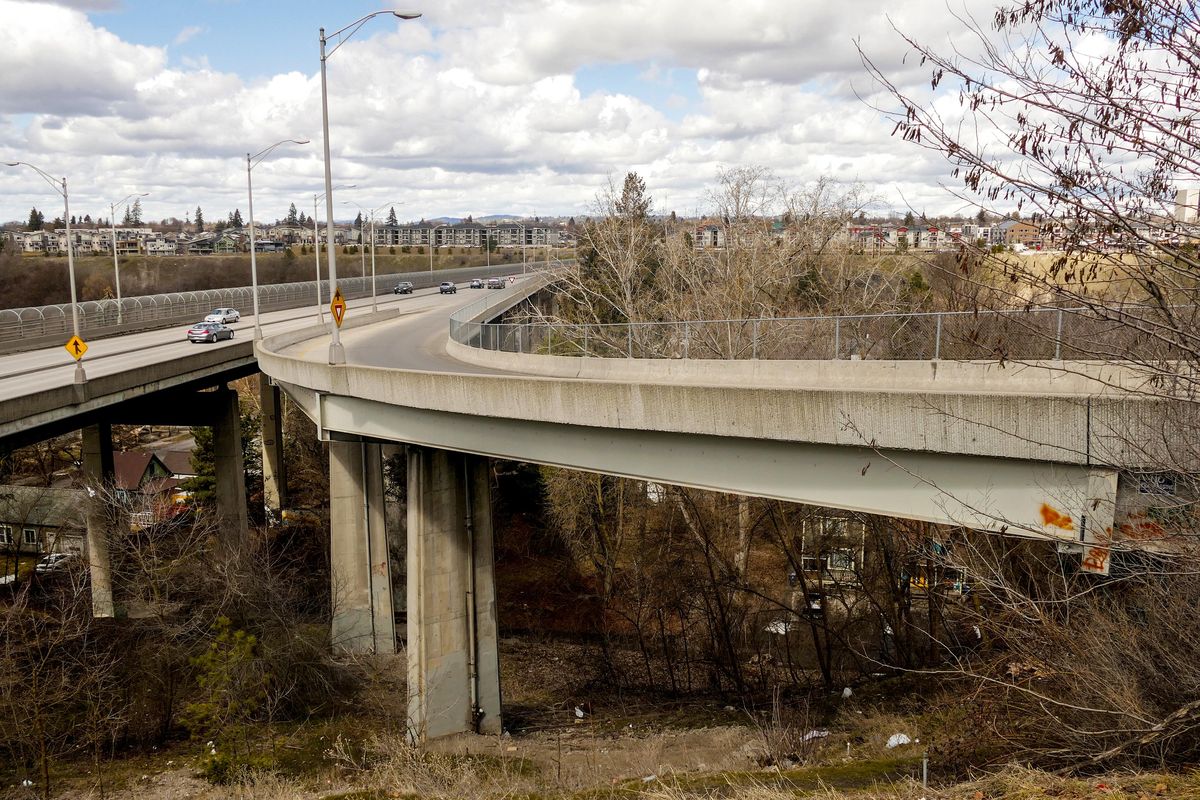Then and Now: Maple Street Bridge

The Spokane River Gorge, especially west of downtown Spokane, has separated the city into two distinct areas since the earliest white settlement. The first link in city limits was the Howard Street Bridge, comprising two spans over Havermale Island. The first to cross the deep gorge was the rickety, wooden Monroe Street Bridge in 1889.
But it wasn’t until the 1950s that the city of Spokane broached the idea of a bridge farther west. The cost of such a structure, spanning the gorge above Peaceful Valley, would be astronomical. Stone and cement bridges built around the turn of the century cost $50,000 to $100,000. The proposed Maple Street Bridge was estimated to cost $4.6 million. It cost more than all the other bridges in city limits put together.
To cover the cost, drivers would have to pay a 10-cent toll.
Ground was broken in 1956 and the massive supports began to rise from the valley floor.
The bridge opened to much fanfare on July 1, 1958, and people lined up in their cars to be the first to cross. Opening festivities featured an appearance by Duncan Reynaldo, who played the Cisco Kid in an early TV Western series. He stood beside Gov. Albert Rosellini as the ribbon was cut.
The bridge is 1,716 feet long, towering 125 feet above the Spokane River, and its road surface is 50 feet wide, plus a 5-foot-wide pedestrian path on the southbound side.
Although city planners weren’t sure if drivers would willingly pay a toll to use it, they did, saving minutes and gasoline as they drove in from the city’s north and northwest side. It immediately took 40 percent of the traffic off the Monroe Street Bridge.
In the late 1950s, there were news accounts that the bridge wasn’t making the revenue projected before construction. For several years, there was doubt that the bonds sold to the Washington teachers’ retirement system would be retired on schedule. In 1981, the toll was raised to 25 cents, but stayed at 10 cents for vehicles carrying three or more people. In 1990, 32 years after it opened, the toll was removed from the bridge.